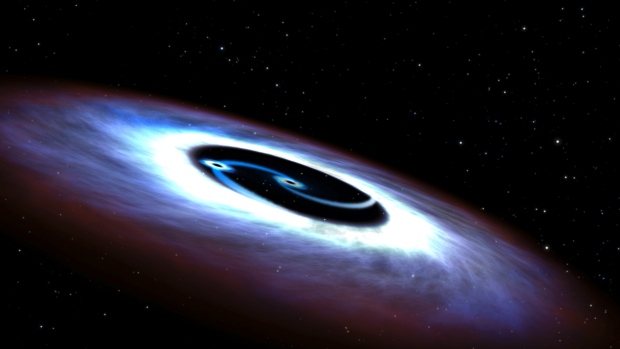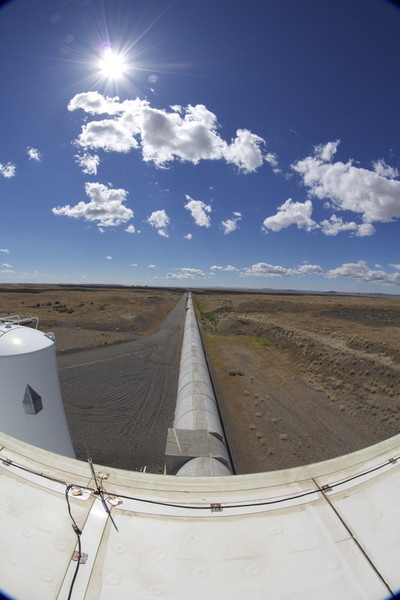
Markarian 231, a binary black hole found in the center of the nearest quasar host galaxy to Earth, is seen in a NASA illustration. Researchers have detected gravitational waves coming from two black holes that orbited one another, spiralled inward and smashed together. // (NASA/Reuters)
Alumnus contributes to major discovery in physics that won Nobel Prize
The recipients of this year’s Nobel Prize in Physics are the founding scientists of the spectacularly successful gravitational wave observatory LIGO.
Alumnus Dr. Michael Landry [PhD/00], who was supervised by Distinguished Professor Emeritus Willem van Oers, is now the Director of the Hanford LIGO Gravitational Wave Observatory, and was previously the lead detector scientist during the time the breakthrough discovery was made.
On Feb. 11, 2016, LIGO, the Laser Interferometer Gravitational-wave Observatory, announced that they had detected a gravitational wave, a phenomenon predicted by Einstein 100 years ago as part of the General Theory of Relativity.
This detection, the first of its kind, was accomplished by comparing results from two detectors, one in Hanford, Washington and one in Livingston, Louisiana, using laser interferometers.
“While the Nobel Prize has to be awarded to a small number of specific persons, this award really recognizes the amazing work done by the whole LIGO collaboration. Within that world-wide group of about 1000 scientists, Michael Landry occupies a top spot. The University of Manitoba is honoured to have such a distinguished scientist and leader amongst our alumni,” said Gerald Gwinner, physics professor and associate department head.
Landry’s graduate work allowed him to participate in experiments with both TRIUMF, Canada’s national laboratory for particle and nuclear physics, and and Brookhaven National Laboratory in the US.
For his postdoc, he joined Caltech and moved from studying the very small to the very large as he became part of the LIGO Hanford detector’s search for proof of gravitational waves generated by colliding black holes.
Congratulations to Dr. Landry and his colleagues on their magnificent work. Carry on.

A view from the ‘end station’ of one of LIGO Hanford’s interferometer arms looking in the direction of the corner station where the two arms meet. The corner station is not visible as it is 4 km (2.5 miles) distant. LIGO’s vacuum tube is protected by the concrete housing visible in the image.
For more on the discovery, read the CBC story here.
This story was updated from one previously published in 2016.






